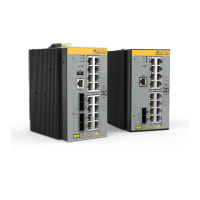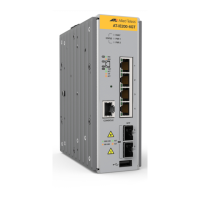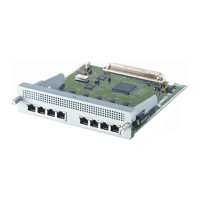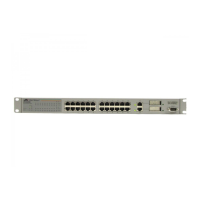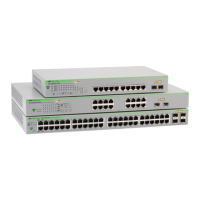C613-50631-01 Rev A Command Reference for IE340 Series 501
AlliedWare Plus™ Operating System - Version 5.5.3-0.x
INTERFACE COMMANDS
INTERFACE
(TO CONFIGURE)
interface (to configure)
Overview Use this command to select one or more interfaces to configure.
Syntax
interface <interface-list>
Usage notes A local loopback interface is one that is always available for higher layer protocols
to use and advertise to the network. Although a local loopback interface is
assigned an IP address, it does not have the usual requirement of connecting to a
lower layer physical entity. This lack of physical attachment creates the perception
of a local loopback interface always being accessible via the network.
Local loopback interfaces can be utilized by a number of protocols for various
purposes. They can be used to improve access to the device and also increase its
reliability, security, scalability and protection. In addition, local loopback interfaces
can add flexibility and simplify management, information gathering and filtering.
One example of this increased reliability is for OSPF to advertise a local loopback
interface as an interface-route into the network irrespective of the physical links
that may be ‘up’ or ‘down’ at the time. This provides a higher probability that the
routing traffic will be received and subsequently forwarded.
Mode Global Configuration
Examples The following example shows how to enter Interface mode to configure VLAN
interface vlan1. Note how the prompt changes.
awplus# configure terminal
awplus(config)# interface vlan1
awplus(config-if)#
Parameter Description
<interface-list> The interfaces to configure. An interface-list can be:
•a VLAN (e.g. vlan2)
• a switchport (e.g. port1.0.4)
• a static channel group (e.g. sa2)
• a dynamic (LACP) channel group (e.g. po2)
• the loopback interface (lo)
• a continuous range of interfaces separated by a hyphen
(e.g. vlan10-20)
• a comma-separated list (e.g. vlan1,vlan10-20). Do not mix
interface types in a list.
The specified interfaces must exist.

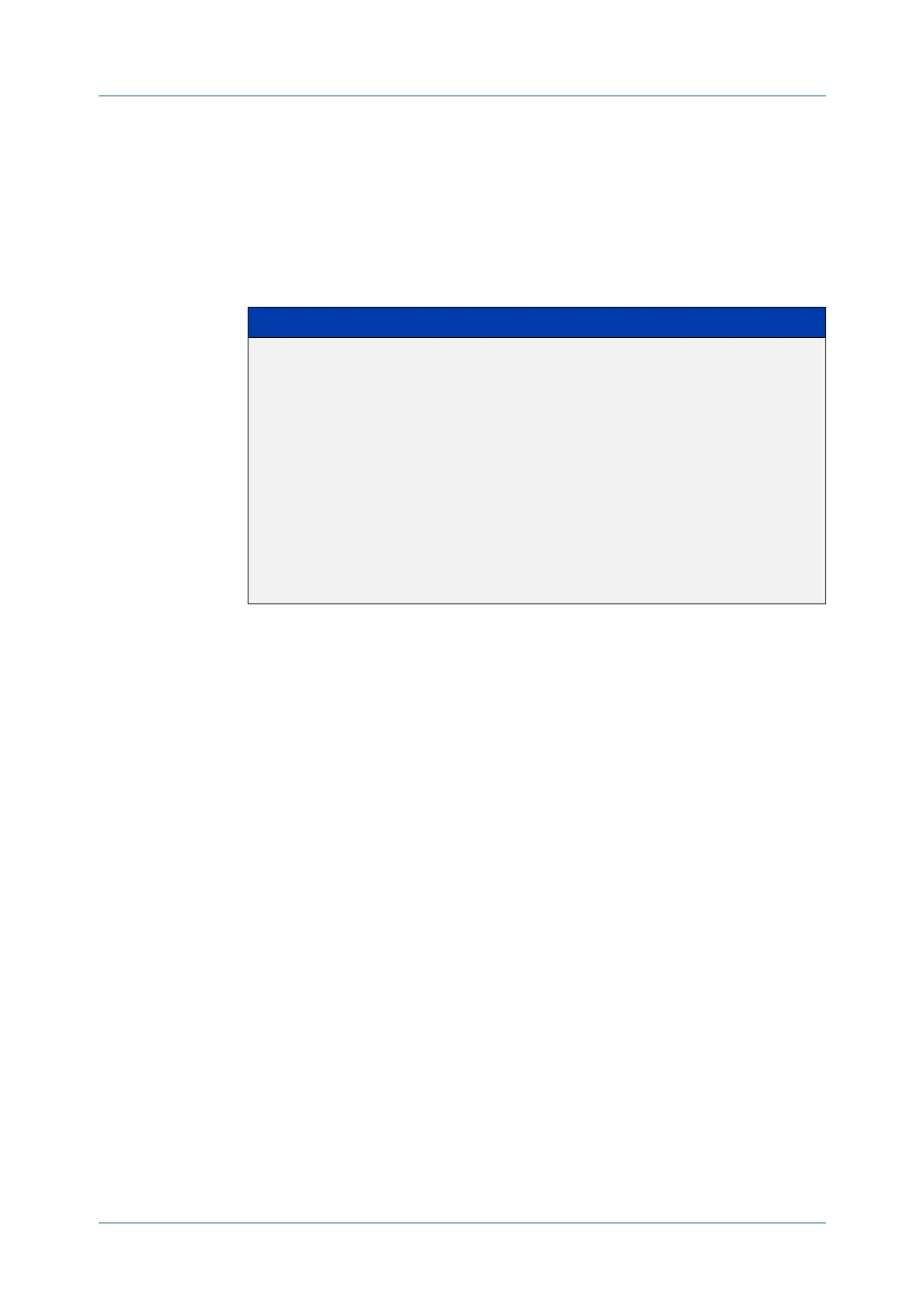